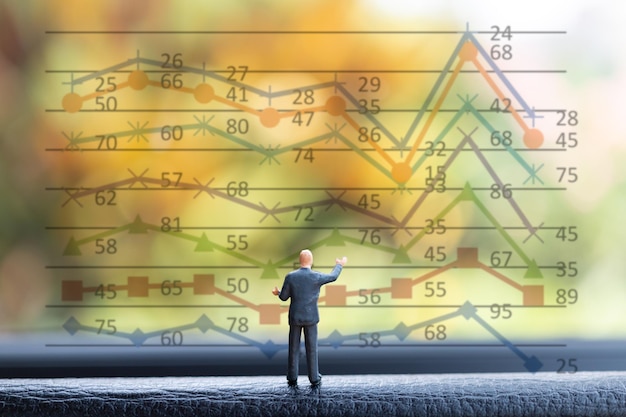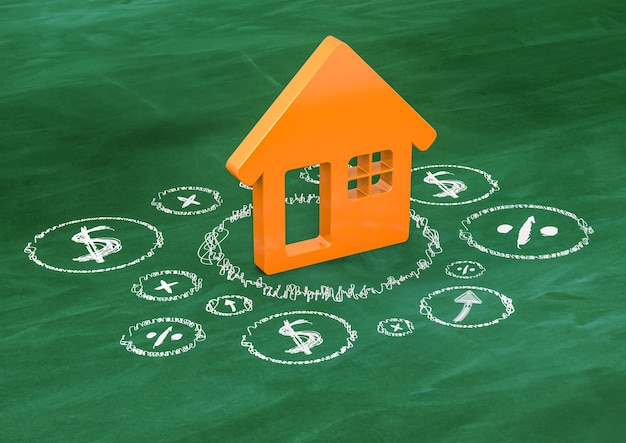Federal Reserve Announces Rate Hike: What It Means for You

Breaking: Federal Interest Rate Hike Announced – How It Affects Your Savings and Loans entails immediate adjustments to borrowing costs for consumers and businesses, influencing everything from mortgage rates to savings account yields and impacting overall economic activity in the US.
The Federal Reserve has just announced another interest rate hike, and it’s crucial to understand how this decision will ripple through your finances. This Breaking: Federal Interest Rate Hike Announced – How It Affects Your Savings and Loans across the spectrum, so let’s dive in and see what you need to know.
Understanding the Federal Reserve’s Decision
The Federal Reserve, often called the Fed, plays a critical role in managing the US economy. Its primary tool for influencing economic activity is adjusting the federal funds rate. But what does this mean for your everyday life?
The federal funds rate is the target rate that commercial banks charge one another for the overnight lending of reserves. When the Fed raises this rate, it becomes more expensive for banks to borrow money. These increased costs are then passed on to consumers and businesses through higher interest rates on loans, credit cards, and other forms of credit. Here’s a deeper look:
Why the Fed Hikes Rates
The Fed typically raises interest rates to combat inflation. When the economy is growing too quickly, prices can rise rapidly, leading to inflation. By increasing borrowing costs, the Fed aims to slow down economic activity, thereby reducing inflationary pressures. Other factors include:
- Controlling Inflation: The main goal is to keep inflation within the Fed’s target range.
- Maintaining Economic Stability: Preventing the economy from overheating.
- Supporting a Strong Labor Market: Balancing employment levels with price stability.
Recent Economic Indicators
Before this recent hike, various economic indicators provided clues about the Fed’s potential actions. These indicators include the Consumer Price Index (CPI), the unemployment rate, and Gross Domestic Product (GDP) growth. For example:
- CPI Data: Recent CPI reports showed persistent inflation, influencing the Fed’s decision.
- Employment Figures: Strong job growth indicated the economy could handle a rate hike.
- GDP Growth: Moderate GDP growth suggested the need for a careful approach to avoid stifling economic expansion.

Monitoring these indicators is crucial for understanding the Fed’s monetary policy decisions and their potential impact on the economy.
In conclusion, the Federal Reserve’s decision to hike interest rates is a strategic move to manage inflation and maintain economic stability, influenced by a variety of economic indicators. Understanding these factors can help individuals and businesses prepare for the potential effects on their finances.
Impact on Savings Accounts
One of the direct consequences of a federal interest rate hike is its effect on savings accounts. Higher interest rates can lead to better returns on your savings, but it’s essential to understand the nuances.
When the Fed raises rates, banks often increase the interest rates they offer on savings accounts, certificates of deposit (CDs), and money market accounts. This means you could earn more money on your savings over time. The extent to which banks pass on these rate hikes to savers can vary based on competition and their overall financial strategy. Key points to consider:
Increased Savings Yields
With higher interest rates, your savings can grow faster. This is particularly beneficial for those with long-term savings goals, such as retirement or a down payment on a house. Factors influencing savings yields include:
- Bank Competition: Banks vying for deposits may offer higher rates.
- Account Type: CDs typically offer higher rates than regular savings accounts.
- Economic Conditions: The overall economic climate can affect how aggressively banks raise rates.
Comparing Different Savings Options
It’s wise to shop around and compare the interest rates offered by different banks and credit unions. Online banks often provide more competitive rates than traditional brick-and-mortar institutions due to lower overhead costs. Some savings options to consider:
- High-Yield Savings Accounts: These accounts offer rates that are significantly higher than traditional savings accounts.
- Certificates of Deposit (CDs): CDs lock in a fixed interest rate for a specific term.
- Money Market Accounts: These accounts offer variable interest rates and may come with check-writing privileges.
Maximizing your savings requires careful consideration of various account types and proactive rate comparison. By staying informed, you can ensure your savings work harder for you.
In summary, a federal interest rate hike can positively impact savings accounts by increasing yields. However, it’s crucial to compare different savings options and choose those that offer the most competitive rates to maximize returns.
Effects on Mortgage Rates
Mortgage rates are highly sensitive to changes in the federal funds rate. Understanding how a rate hike can affect your mortgage is crucial whether you’re a current homeowner or planning to buy a home.
When the Fed raises interest rates, mortgage rates typically follow suit. This means that it becomes more expensive to borrow money to buy a home. The exact impact on mortgage rates can vary depending on several factors, including investor expectations, economic conditions, and the specific type of mortgage. Here’s what you need to be aware of:
Rising Interest Rates for New Mortgages
If you’re planning to buy a home, a rate hike means you’ll likely face higher interest rates on your mortgage. This can significantly increase your monthly payments and the total amount of interest you pay over the life of the loan. Important aspects to consider:
- Fixed-Rate Mortgages: Rates are locked in for the life of the loan, providing stability but potentially higher initial rates.
- Adjustable-Rate Mortgages (ARMs): Rates can change periodically based on market conditions, offering lower initial rates but risk of future increases.
- Loan Amount: Higher rates have a more pronounced effect on larger loan amounts.
Impact on Existing Homeowners
If you already have a mortgage, the impact of a rate hike depends on whether you have a fixed-rate or adjustable-rate mortgage. Fixed-rate mortgages are not affected, while ARMs can see their rates increase. Strategies for homeowners include:
- Refinancing Options: Explore refinancing to a fixed-rate mortgage to avoid potential rate increases.
- Budget Adjustments: Prepare for potentially higher monthly payments if you have an ARM.
- Principal Reduction: Consider making extra payments to reduce the loan principal and minimize interest costs.

Being informed about potential rate changes and exploring refinancing options can help homeowners mitigate the impact of rising rates.
In conclusion, a federal interest rate hike can significantly impact mortgage rates, affecting both new homebuyers and existing homeowners. Rising rates can lead to higher costs for new mortgages, while homeowners with ARMs may see their payments increase. It’s essential to understand these impacts and take proactive steps to manage your mortgage effectively.
Credit Card Interest Rates
Another significant area affected by federal interest rate hikes is credit card interest rates. Understanding how these rates work and how they can impact your finances is crucial for responsible credit card usage.
Credit card interest rates, often referred to as Annual Percentage Rates (APRs), are typically variable. This means they are directly linked to benchmark interest rates, such as the prime rate, which tends to move in tandem with the federal funds rate. When the Fed raises rates, credit card APRs generally increase as well. Key components to consider:
Increased APRs on Credit Cards
Higher interest rates on credit cards can make it more expensive to carry a balance. This can lead to increased debt and higher monthly payments. Strategies for managing credit card debt include:
- Paying off Balances: Prioritize paying off your credit card balances in full each month to avoid interest charges.
- Balance Transfers: Consider transferring balances to cards with lower APRs.
- Debt Consolidation: Explore consolidating credit card debt with a personal loan or a balance transfer to a lower-rate card.
Strategies for Managing Credit Card Debt
Managing credit card debt effectively becomes even more critical during periods of rising interest rates. Creating a budget, prioritizing payments, and exploring debt relief options can help you stay on track.
Proactive debt management can significantly reduce the financial impact of rising credit card interest rates. By taking control of your credit card usage and exploring available options, you can minimize debt and maintain financial stability.
In summary, a federal interest rate hike typically leads to increased credit card interest rates, making it more expensive to carry a balance. Managing credit card debt through proactive strategies like balance transfers and debt consolidation is essential for minimizing the financial impact.
Business Loans and Investments
Beyond personal finances, a federal interest rate hike also affects business loans and investment strategies. Understanding these implications is crucial for business owners and investors alike.
Businesses often rely on loans to fund operations, expand, or invest in new projects. Higher interest rates make borrowing more expensive, potentially impacting business growth and profitability. For investors, rate hikes can influence the attractiveness of different investment options. Here’s a detailed look:
Impact on Business Borrowing
When interest rates rise, businesses may face higher borrowing costs, leading to decreased investment and slower growth. Strategies for businesses include:
- Careful Financial Planning: Develop a robust financial plan that accounts for potential rate increases.
- Exploring Alternative Funding Sources: Consider options like venture capital, crowdfunding, or government grants.
- Improving Cash Flow Management: Streamline operations to improve cash flow and reduce the need for borrowing.
Investment Considerations
Rising interest rates can influence investment decisions, affecting the performance of stocks, bonds, and other asset classes. Key investment considerations include:
- Bond Yields: Bond yields typically rise with interest rates, making bonds more attractive to investors.
- Stock Market Impact: Higher rates can negatively impact the stock market, particularly for companies with high debt levels.
- Diversification: Diversifying investments across different asset classes can help mitigate risk during periods of rate hikes.
Strategic financial planning and diversified investment strategies can help businesses and investors navigate the challenges posed by rising interest rates.
In conclusion, a federal interest rate hike impacts both business loans and investment strategies. Businesses face increased borrowing costs, while investors must adjust their portfolios to account for changing market conditions. Prudent financial planning and strategic decision-making are essential during these times.
Preparing Your Finances for Future Rate Hikes
Given the potential for future rate hikes, it’s wise to take proactive steps to prepare your finances. This involves reviewing your budget, managing debt, and adjusting your investment strategy.
Taking control of your finances and making necessary adjustments can help you weather the storm and emerge stronger. Here are some steps you can take:
Reviewing Your Budget
Start by reviewing your budget and identifying areas where you can cut expenses. This will help you free up cash to pay down debt and increase your savings. Consider:
- Tracking Expenses: Use budgeting apps or spreadsheets to track your spending.
- Identifying Savings Opportunities: Look for areas where you can reduce costs, such as dining out, entertainment, or subscriptions.
- Creating a Savings Plan: Set specific savings goals and create a plan to achieve them.
Debt Management Strategies
Managing your debt is crucial during periods of rising interest rates. Focus on paying down high-interest debt and exploring options for consolidating debt. Strategies include:
- Prioritizing Debt Payments: Focus on paying off debts with the highest interest rates first.
- Exploring Debt Consolidation: Consider consolidating debt with a personal loan or a balance transfer to a lower-rate card.
- Avoiding New Debt: Minimize new borrowing and avoid unnecessary expenses.
Adjusting Your Investment Portfolio
Adjusting your investment portfolio can help you mitigate the impact of rising interest rates and take advantage of new opportunities. Consider:
- Diversifying Investments: Spread your investments across different asset classes to reduce risk.
- Rebalancing Your Portfolio: Periodically rebalance your portfolio to maintain your desired asset allocation.
- Seeking Professional Advice: Consult with a financial advisor to get personalized guidance.
| Key Point | Brief Description |
|---|---|
| 💰 Savings Accounts | Yields may increase; shop around for the best rates. |
| 🏠 Mortgage Rates | New mortgages become more expensive; consider refinancing. |
| 💳 Credit Cards | APRs rise; prioritize paying off balances. |
| 🏢 Business Loans | Borrowing becomes pricier; explore alternative funding. |
Frequently Asked Questions
▼
The federal funds rate is the target interest rate that commercial banks charge one another for the overnight lending of reserves. The Federal Reserve uses this rate to influence economic activity.
▼
A rate hike typically leads to higher interest rates on savings accounts, allowing you to earn more on your deposits. Compare rates from different banks to maximize your returns.
▼
Mortgage rates usually increase following a rate hike. If you’re buying a home, expect higher borrowing costs. Existing homeowners with ARMs may see their payments increase.
▼
Credit card APRs generally rise with interest rate hikes, making it more expensive to carry a balance. Focus on paying off your balances to avoid interest charges.
▼
Businesses should carefully plan their finances, explore alternative funding sources, and improve cash flow management to mitigate the impact of higher borrowing costs.
Conclusion
In summary, understanding the implications of a federal interest rate hike is crucial for managing your finances effectively. By taking proactive steps to review your budget, manage debt, and adjust your investment strategy, you can navigate the changing economic landscape and protect your financial well-being.






